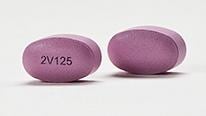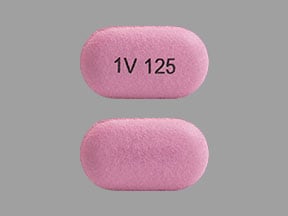What is Orkambi?
Orkambi is a prescription medicine used for the treatment of cystic fibrosis (CF) in patients age 2 years and older who have two copies of the F508del mutation (F508del/F508del) in their CFTR gene.
Orkambi should not be used in patients other than those who have two copies of the F508del mutation in their CFTR gene.
It is not known if Orkambi is safe and effective in children under 2 years of age.
Who should not take Orkambi?
Do not take Orkambi if you take certain medicines or herbal supplements such as:
- antibiotics: rifampin (Rifamate, Rifater) or rifabutin (Mycobutin)
- seizure medications: phenobarbital, carbamazepine (Tegretol, Carbatrol, and Equetro), or phenytoin (Dilantin, Phenytek)
- sedatives and anti-anxiety medicines: triazolam (Halcion) or midazolam (Dormicum, Hypnovel, and Versed)
- immunosuppressant medicines: cyclosporine, everolimus (Zortress), sirolimus (Rapamune), or tacrolimus (Astagraf XL, Envarsus XR, Prograf, Protopic)
- St. John's wort (Hypericum perforatum)
Talk to your doctor before taking Orkambi if you take any of the medicines or supplements listed above.
What should I tell my healthcare provider before taking Orkambi?
Before taking Orkambi, tell your healthcare provider about all of your medical conditions, including if you:
- have or have had liver problems
- have had an organ transplant
- have kidney problems
- are using birth control (hormonal contraceptives, including oral, injectable, transdermal, or implantable forms). Hormonal contraceptives should not be used as a method of birth control when taking Orkambi. Talk to your doctor about the best birth control method you should use while taking Orkambi.
- are pregnant or plan to become pregnant. It is not known if Orkambi will harm your unborn baby. You and your doctor should decide if you will take Orkambi while you are pregnant.
- are breastfeeding or planning to breastfeed. It is not known if Orkambi passes into your breast milk. You and your doctor should decide if you will take Orkambi while you are breastfeeding.
Orkambi may affect the way other medicines work, and other medicines may affect how Orkambi works.
Tell your doctor about all the medicines you take, including prescription and over-the-counter medicines, vitamins, and herbal supplements, because the dose of Orkambi may need to be adjusted when taken with certain medications.
Ask your doctor or pharmacist for a list of these medicines if you are not sure.
Especially tell your doctor if you take:
- antifungal medications including ketoconazole (such as Nizoral), itraconazole (such as Sporanox), posaconazole (such as Noxafil), or voriconazole (such as Vfend)
- antibiotics including telithromycin (such as Ketek), clarithromycin (such as Biaxin), or erythromycin (such as Ery-Tab)
Know the medicines you take. Keep a list of them to show your doctor and pharmacist when you get a new medicine.
How should I take Orkambi?
- Take Orkambi exactly as your doctor tells you to take it.
- Always take Orkambi tablets or granules with foods that contain fat. Examples of fat containing foods include eggs, avocados, nuts, butter, peanut butter, cheese pizza, whole-milk dairy products (such as whole milk, cheese, and yogurt).
- Take your doses of Orkambi 12 hours apart.
- If you miss a dose within 6 hours of when you usually take it, take your dose with fat-containing food as soon as possible.
- If you miss a dose and it is more than 6 hours after the time you usually take it, skip that dose only and take the next dose when you usually take it. Do not take 2 doses at the same time to make up for your missed dose.
- Tell your doctor if you stop Orkambi for more than 1 week. Your doctor may need to change your dose of Orkambi or other medicines you take.
Orkambi Tablets (ages 6 years and older):
- Each Orkambi box contains 4 weekly cartons.
- Each carton contains 7 daily blister strips.
- Each blister strip contains 4 tablets so you can take 2 tablets for the morning and 2 tablets for the evening.
- You may cut along the dotted line to separate your morning dose from your evening dose.
- To take your morning dose, unpeel the paper backing from a blister strip (do not push tablet through backing) to remove 2 Orkambi tablets and take them with fat-containing food.
- 12 hours after your previous dose, open another blister strip (do not push tablet through backing) to remove 2 Orkambi tablets and take them with fat-containing food.
Orkambi Oral Granules (ages 2 to under 6 years old):
- Hold the packet with the cut line on top.
- Shake the packet gently to settle the Orkambi granules.
- Tear or cut packet open along cut line.
- Carefully pour all of the Orkambi granules in the packet into 1 teaspoon (5 mL) of soft food or liquid in a small container (like an empty bowl).
- The food or liquid should be at or below room temperature.
- Examples of soft foods or liquids include puréed fruits, flavored yogurt or pudding, and milk or juice.
- Mix the Orkambi granules with food or liquid.
- After mixing, give Orkambi within 1 hour. Make sure all medicine is taken.
- Give a child fat-containing food just before or just after the Orkambi granules dose (see examples above).
What are the possible side effects of Orkambi?
Orkambi can cause serious side effects, including:
- Worsening of liver function in people with severe liver disease. The worsening of liver function can be serious or cause death. Talk to your doctor if you have been told you have liver disease as your doctor may need to adjust the dose of Orkambi.
- High liver enzymes in the blood, which can be a sign of liver injury in people receiving Orkambi. Your doctor will do blood tests to check your liver:
- before you start Orkambi
- every 3 months during your first year of taking Orkambi
- every year while you are taking Orkambi
Call your doctor right away if you have any of the following symptoms of liver problems:- pain or discomfort in the upper right stomach (abdominal) area
- loss of appetite
- dark, amber-colored urine
- yellowing of your skin or the white part of your eyes
- nausea or vomiting
- confusion
- Breathing problems such as shortness of breath or chest tightness in patients when starting Orkambi, especially in patients who have poor lung function. If you have poor lung function, your doctor may monitor you more closely when you start Orkambi.
- An increase in blood pressure in some people receiving Orkambi. Your doctor should monitor your blood pressure during treatment with Orkambi.
- Abnormality of the eye lens (cataract) in some children and adolescents receiving Orkambi. If you are a child or adolescent, your doctor should perform eye examinations before and during treatment with Orkambi to look for cataracts.
The most common side effects of Orkambi include:
- breathing problems such as shortness of breath and chest tightness
- nausea
- diarrhea
- fatigue
- increase in a certain blood enzyme called creatine phosphokinase
- rash
- gas
- common cold, including sore throat, stuffy or runny nose
- flu or flu-like symptoms
- irregular, missed, or abnormal periods (menses) and increase in the amount of menstrual bleeding
Additional side effects in children
Side effects seen in children are similar to those seen in adults and adolescents. Additional common side effects seen in children include:
- cough with sputum
- stuffy nose
- headache
- stomach pain
- increase in sputum
These are not all the possible side effects of Orkambi.
Call your doctor for medical advice about side effects. You may report side effects to FDA at 1-800-FDA-1088.
Orkambi Images
General information about the safe and effective use of Orkambi
Medicines are sometimes prescribed for purposes other than those listed in a Patient Information leaflet. Do not use Orkambi for a condition for which it was not prescribed. Do not give Orkambi to other people, even if they have the same symptoms you have. It may harm them.
You can ask your pharmacist or doctor for information about Orkambi that is written for health professionals.
How should I store Orkambi?
- Store Orkambi at room temperature between 68°F to 77°F (20°C to 25°C).
- Do not use Orkambi after the expiration date on the package.
Keep Orkambi and all medicines out of the reach of children.
What are the ingredients in Orkambi?
Active ingredients: lumacaftor and ivacaftor
Inactive ingredients:
Tablets: cellulose, microcrystalline; croscarmellose sodium; hypromellose acetate succinate; magnesium stearate; povidone; and sodium lauryl sulfate.
The tablet film coat contains: carmine, FD&C Blue #1, FD&C Blue #2, polyethylene glycol, polyvinyl alcohol, talc, and titanium dioxide.
The printing ink contains: ammonium hydroxide, iron oxide black, propylene glycol, and shellac.
Oral Granules: cellulose, microcrystalline; croscarmellose sodium; hypromellose acetate succinate; povidone; and sodium lauryl sulfate.
For more information, go to www.orkambi.com or call 1 877 752 5933.



